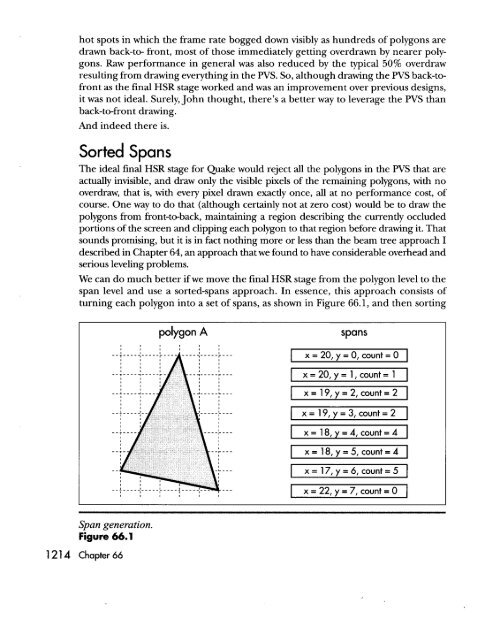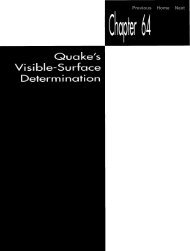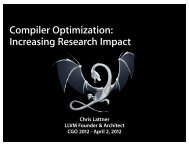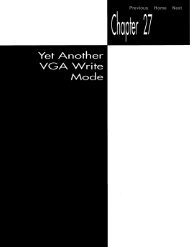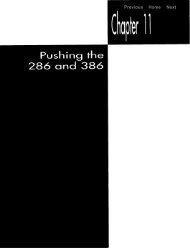Create successful ePaper yourself
Turn your PDF publications into a flip-book with our unique Google optimized e-Paper software.
hot spots in which the frame rate bogged down visibly as hundreds of polygons are<br />
drawn back-to- front, most of those immediately getting overdrawn by nearer polygons.<br />
Raw performance in general was also reduced by the typical 50% overdraw<br />
resulting from drawing everything in the PVS. So, although drawing the PVS back-tofront<br />
as the final HSR stage worked and was an improvement over previous designs,<br />
it was not ideal. Surely, John thought, there’s a better way to leverage the PVS than<br />
back-to-front drawing.<br />
And indeed there is.<br />
Sorted Spans<br />
The ideal final HSR stage for Quake would reject all the polygons in the PVS that are<br />
actually invisible, and draw only the visible pixels of the remaining polygons, with no<br />
overdraw, that is, with every pixel drawn exactly once, all at no performance cost, of<br />
course. One way to do that (although certainly not at zero cost) would be to draw the<br />
polygons from front-to-back, maintaining a region describing the currently occluded<br />
portions of the screen and clipping each polygon to that region before drawing it. That<br />
sounds promising, but it is in fact nothing more or less than the beam tree approach I<br />
described in Chapter 64, an approach that we found to have considerable overhead and<br />
serious leveling problems.<br />
We can do much better if we move the final HSR stage from the polygon level to the<br />
span level and use a sorted-spans approach. In essence, this approach consists of<br />
turning each polygon into a set of spans, as shown in Figure 66.1, and then sorting<br />
polygon A<br />
spans<br />
Span generation.<br />
Figure 66.1<br />
1 21 4 Chapter 66


